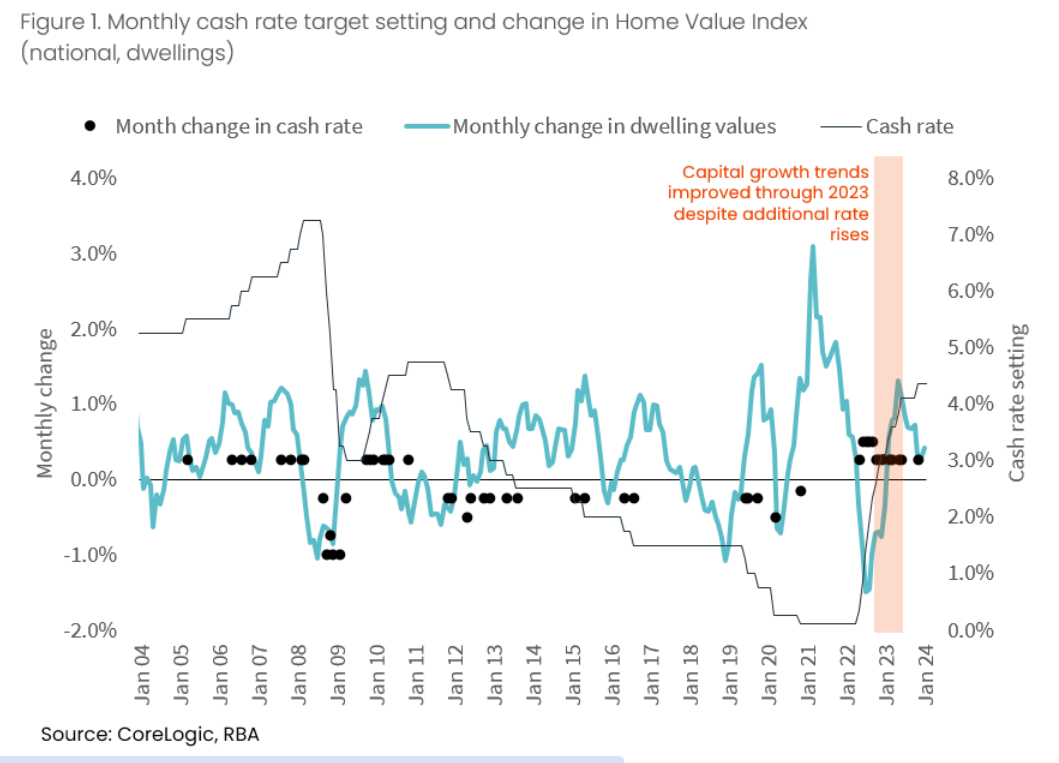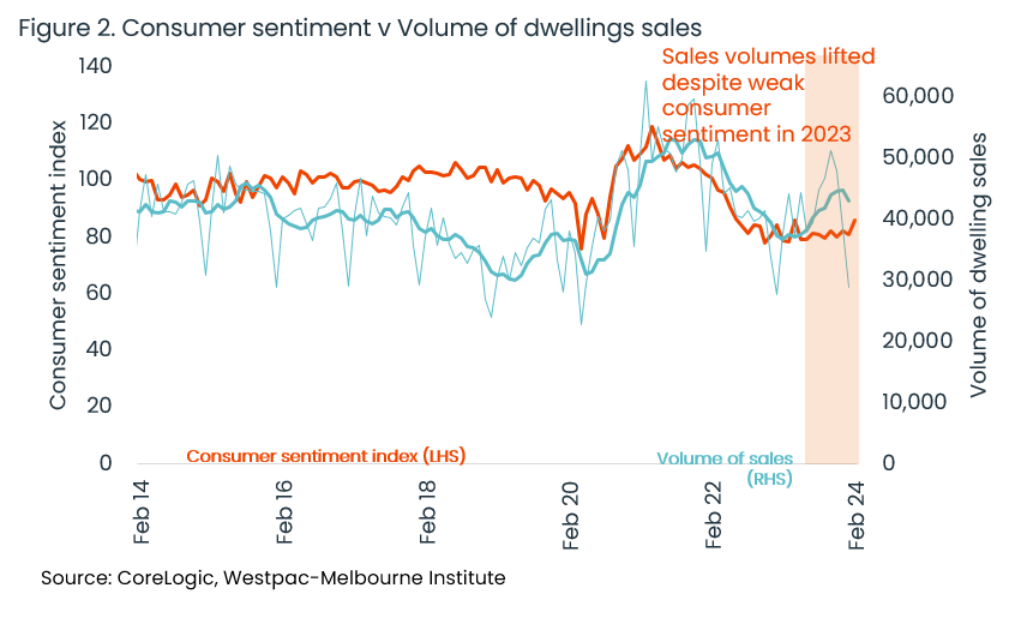[ad_1]
Economist talks in regards to the relationship between rates of interest and residential values

CoreLogic’s Eliza Owen (pictured above), head of residential analysis for Australia, has carried out an in-depth evaluation into the evolving dynamics of the housing market, revealing how conventional financial indicators have turn out to be much less predictive of housing developments, particularly amid the challenges of the pandemic and into 2023.
Sometimes, a direct relationship exists between rates of interest and residential values: as the previous rise, the latter are likely to fall, and vice versa. But, this well-established financial courtship confronted turmoil from late 2022 into mid-2023, regardless of a document rise within the money charge, as depicted in Determine 1.

“Initially, house values had a powerful response to charge rises, falling -7.5% between April 2022 and January 2023,” Owen stated. “Nevertheless, by November final 12 months, house values rebounded to new document highs. This coincided with 5 additional money charge will increase in 2023.”
How, then, did house values handle to climb regardless of the rising price of borrowing?
Relationship breakdown: Rates of interest and residential values
Different parts have stoked the market’s resilience.
“These embody a strong-bounce again in inhabitants development from mid-2022, when worldwide border restrictions eased and web abroad migration soared to 518,000 within the 2022-23 monetary 12 months,” Owen stated. “Tight rental markets might have additionally been at play, with unusually excessive lease development and low emptiness charges prompting extra folks to buy housing.”
This isn’t the primary time the bond between rates of interest and property values has been examined. The same development was noticed between 2004 and 2008, throughout a powerful financial cycle enhanced by a mining growth and rising web abroad migration, resulting in a lower in nationwide unemployment charges. Current knowledge additionally advised a shift in direction of patrons much less depending on housing loans, additional diversifying market dynamics, the CoreLogic evaluation confirmed.
Shopper sentiment versus gross sales quantity
Regardless of 2023 internet hosting among the lowest shopper sentiment indices because the early ‘90s recession, dwelling gross sales defied expectations. With gross sales volumes peaking in October 2023, the market demonstrated an uncanny resilience, diverging from the gloomy shopper outlook.
In October, 51,302 gross sales have been recorded, a 27.6% surge in comparison with the earlier 12 months, whilst shopper sentiment dipped by 2.0% throughout the identical timeframe. 
“The departure of gross sales volumes from gloomy shopper sentiment reads echoes the restoration in housing values amid excessive rates of interest,” Owen stated. “Tight rental markets, sturdy inhabitants development and lively patrons who’re much less reliant on housing credit score might have performed a component in pushing gross sales volumes increased within the spring of 2023.
“Nevertheless, as with the month-to-month development in house values slowing nationally, the top of 2023 did present a slight easing within the six-month development of gross sales volumes.”
The trail ahead
Whereas the latter a part of 2023 indicated a possible cooling interval for housing values and gross sales, early 2024 reveals indicators of reinvigoration in some capital markets, highlighted by Sydney’s sturdy public sale clearance charges and marginal house worth will increase.
This implies that even the notion of stabilising rates of interest might breathe new life into the market as we advance by way of 2024, Owen stated.
Get the most well liked and freshest mortgage information delivered proper into your inbox. Subscribe now to our FREE day by day publication.
Sustain with the most recent information and occasions
Be part of our mailing checklist, it’s free!

[ad_2]

